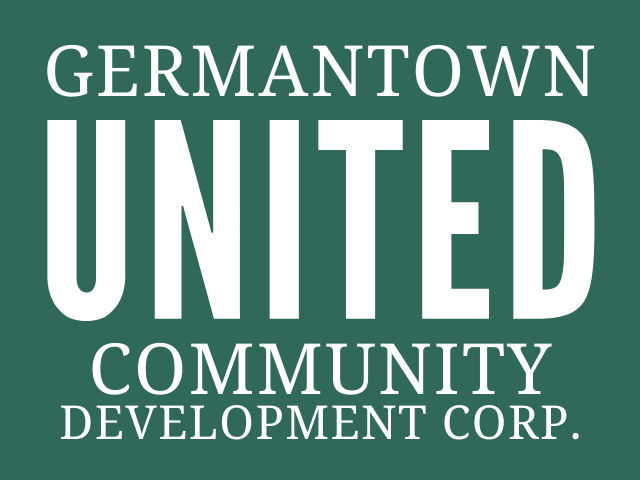Repost from PlanPhilly
Germantown United CDC gets tough love from community rejuvenators
MARCH 1, 2012 | By AMY Z. QUINN
The community development experts who came to Northwest Philadelphia on Wednesday to meet with Germantown United Community Development Corp. and offer advice didn’t pull any punches in talking about the challenges ahead.
Everyone in the community won’t agree with what you’re doing — and they don’t have to, one advised.
Be willing to go to great lengths to get people involved — even if it means sometimes playing on their fears, another said.
Understand that gentrification will mean that some people will leave — and that’s not always a bad thing, yet another said.
And most of all, they offered, be ready to fight against low expectations — from within and without.
“People have low expectations, and it gives them an excuse not to engage,” said Colvin W. Grannum, president of the Bedford-Stuyvesant Restoration Corp., which began revitalization efforts in New York City in 1967.
Similar challenges
At the panel discussion, held on the Germantown Friends School campus, Grannum talked about some of the challenges the nation’s first community development corporation has faced in the 45 years since it was started by U.S. Senators Robert F. Kennedy and Jacob Javits.
While Bed-Stuy had riots that touched off its downward spiral, Germantown doesn’t have one signature traumatic event that spurred its decline. Decades of middle-class flight were worsened by Germantown Settlement’s corruption and neglect. However, many of the challenges are the same, Grannum said.
His group had success early on with residential development, but that alone won’t rebuild a community, panelists said.
“The easiest thing to do is build houses,” said Grannum, but the greater challenge is creating a mix of residential, commercial and community uses. Some startups will fail while others will thrive, but many different approaches should be tried.
In Bed-Stuy, the CDC has backed everything from a Pathmark supermarket to artist space and schools, aimed at keeping residents working and shopping in the neighborhood.
“People just got in the habit of going outside the community to shop,” he said. Then, they assumed that “if they put something here, it’s not going to be good anyway.”
That struck a chord with the audience in Germantown, where the desire for more upscale retail bumps against the reality of the lower-income shoppers who frequent the commercial corridors on Germantown and Chelten avenues.
A new direction ahead?
Still, there was acknowledgment that Germantown seems poised to make a change.
“Germantown has some real assets to build on, and there’s real potential to create an organization that has some lasting power,” said Rick Sauer, executive director of the Philadelphia Association of Community Development Corporations.
One thing Germantown has working for it is its history. Founded in 1683, the neighborhood is home to 15 historic sites, seven of which are National Historic Landmarks. Each year, more than 40,000 visitors and school children come to see the neighborhood’s offerings, said Barbara Hogue of Historic Germantown.
But despite being a Colonial Historic District, it’s difficult to draw outside tourists and even tougher to keep them in Germantown once they arrive. Hogue has applied for a grant through the Pew Charitable Trust’s Heritage Philadelphia Program, in hopes of creating a festival in 2013 around a theme of the struggle for freedom.
Stephen P. Mullin, a former finance and commerce director and now principal at Econsult, talked about the importance of controlling the real estate involved, whether through CDC ownership or in working with property owners who are also vested in the community.
Engage those who want to gripe
Some of the most practical advice came from Sandy Salzman of the New Kensington CDC, which has put in 27 tough years trying to craft new development and a renewed sense of identity in Fishtown, Kensington and Port Richmond.
“There are always people who are going to get involved when they have something to gripe against,” she said. Her message: Even if residents come to the table to fight against something — in her neighborhood, it was the SugarHouse Casino — seize the chance to keep them involved.
Salzman said when her group started to notice artists and other creative professionals moving northward from Old City and Northern Liberties, there was a concerted effort to court them.
“We decided that we could either capture them and try to get them to stay, or we could just watch them keep on moving along,” she said
So, they created the Frankford Avenue Arts District and events like the Kensington Kinetic Sculpture Derby. Now, they are now watching the neighborhood fashion itself a new identity.
An audience-submitted question asked what Germantown should do to attract better retailers in the face of proliferating nail salons and beauty shops. Salzman suggested creating a beauty and fashion district to encourage quality.
John Churchville, Germantown United CDC’s first president, called it the group’s “coming out party.”
Character, culture and competence will be the group’s touchstones, he said, pledging an environment of transparency and action.
“We’re not here to fight and to fuss and carry on,” he said. “We are here to get something done.”
—
NewsWorks has partnered with independent news gatherer PlanPhilly to provide regular, in-depth, timely coverage of planning, zoning and development news.
Permalink: https://whyy.org/articles/germantown-panel







